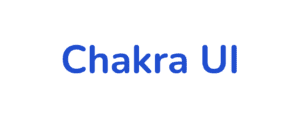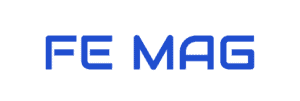When it comes to building user interfaces with React, developers have a variety of tools and libraries to choose from. Two of the most popular options are Chakra UI and Tailwind CSS.
Chakra UI is the perfect design system for developing stunning user interfaces in React. Equipped with accessibility and design consistency as its key principles, Chakra UI provides a vast selection of pre-made components and tools that support developers in creating beautiful applications quickly and efficiently.
In contrast, Tailwind is a utility-first CSS framework that empowers you to construct custom designs with its collection of low-level CSS classes. It can be integrated with other libraries and frameworks for quickly styling web pages and applications.
We will take an in-depth look at Chakra UI vs Tailwind CSS. By the conclusion of this piece, you’ll have a thorough knowledge of the features, pros and cons, and ideal use cases of both libraries, allowing you to make an informed choice for your next project.
Integration with React
Both Chakra UI and Tailwind CSS can be easily integrated with React to build user interfaces.
Chakra UI

To use Chakra UI with React, you need to install the @chakra-ui/react package and some dependencies, which provides the components and tools you need to build user interfaces with React.
Here’s a simple guide to kickstart your Chakra UI and React journey:
- Install Chakra UI package by running the following command:
npm install @chakra-ui/react @emotion/react @emotion/styled framer-motion
- Import the
ThemeProvidercomponent from the@chakra-ui/reactpackage and wrap your application with it. This will provide the theme context to the components in your application.
import { ThemeProvider } from "@chakra-ui/react";
function App() {
return (
<ThemeProvider>
<div>
{/* Your application goes here */}
</div>
</ThemeProvider>
);
}
- Import the components you need to use in your application from the
@chakra-ui/reactpackage. For example, to use theButtoncomponent:
import { Button } from "@chakra-ui/react";
- Use the components in your JSX code. For instance, to create a button:
function App() {
return (
<ThemeProvider>
<Button>Click me</Button>
</ThemeProvider>
);
}
- You can also customize the theme by passing a
themeprop to theThemeProvidercomponent. You can use thetheme()function to create custom styles based on the current theme.
Tailwind CSS
Using Tailwind CSS with React can be achieved by following a few simple steps:
- First, install the
tailwindcsspackage by running the command:
npm install tailwindcss
- Next, create a
tailwind.config.jsfile in the root of your project, this will allow you to configure the design variables to fit the specific needs of your project.
module.exports = {
theme: {
extend: {},
},
variants: {},
plugins: [],
}
- Create a CSS file, for example
src/tailwind.cssand import the tailwind css by running the following command:
npx tailwindcss init
- In your React application, import the newly created CSS file.
import "./tailwind.css";
- Apply the classes to the elements you want to style.
<div className="bg-blue-500 text-white p-4">
<h1 className="text-2xl">Hello World</h1>
</div>
Design Principles
Chakra UI and Tailwind CSS have different design principles that shape their approach to building user interfaces.
Chakra UI is built on the principles of accessibility and design consistency. It provides a set of pre-built components that are designed to be accessible and consistent, ensuring that users can easily interact with your application regardless of their abilities.
Chakra UI also offers a range of customization options through its set of props, allowing you to easily create a cohesive design.
Tailwind CSS, on the other hand, is built on the principles of utility-first design. This means that it provides a set of low-level CSS classes that can be used to style any HTML element. These classes are highly modular and composable, making it easy to create custom designs by combining different classes.
Tailwind CSS is also highly customizable, allowing developers to adjust the design variables to fit the specific needs of their project.
Components and Styling
When comparing Chakra UI and Tailwind CSS, one key difference is the type of components and styling options they offer.
Chakra UI offers a range of pre-constructed components, such as buttons, forms, layout elements, and more. These components are created with accessibility and consistency in mind, and can be easily integrated into your application.
Additionally, Chakra UI provides various props that can be used to customize the appearance and behavior of the components.
In contrast, Tailwind CSS utilizes a set of low-level CSS classes that can be used to style any HTML element. These classes are based on the principles of utility-first design, which allows for highly modular and composable styling.
With Tailwind CSS, you can style any web page, regardless of the framework or library it is built with.
Customization and Scalability
Both Chakra UI and Tailwind CSS offer a high degree of flexibility and scalability to match the unique requirements of your project.
Chakra UI offers various props that can be used to customize the appearance and behavior of its pre-built components, such as color, spacing, typography, and other visual elements.
Furthermore, Chakra UI includes a theming system that allows for quick changes to the visual design of the entire application by adjusting global variables.
Similarly, Tailwind CSS provides a high level of customization through its low-level CSS classes which can be combined and tailored to create custom designs.
Tailwind CSS also includes design variables that can be used to change the overall look and feel of the application.
Performance and Compatibility
When it comes to performance, Chakra UI and Tailwind CSS have been designed to have minimal impact on your application.
Chakra UI is a React-based design system and component library that uses pre-built components that are optimized for performance. These components are built with accessibility and design consistency in mind and are lightweight, which makes them easy on performance.
Tailwind CSS is a utility-first CSS framework that provides low-level CSS classes that can be used to style any HTML element. Since it does not include any JavaScript, it has minimal impact on the performance of your application.
However, it’s crucial to pay attention to the number and size of classes utilized, as excessive usage may cause your CSS file to expand and negatively impact the performance of your application.
It is important to note that Chakra UI is only compatible with React projects while Tailwind CSS can be used with any library or framework.
Community Support and Documentation
Both Chakra UI and Tailwind CSS have a strong community presence and comprehensive documentation.
Chakra UI has a growing community of developers who contribute to the development of the library and provide support through the GitHub repository. The official documentation is detailed and guides developers through the library’s features and usage.
Similarly, Tailwind CSS has a dedicated community of developers who actively contribute to the development and offer support through the GitHub repository. The official documentation is also comprehensive, effectively guiding users through the framework and its capabilities.
Both libraries have active communities and well-maintained documentation, providing developers with the necessary resources to effectively utilize the libraries.
Ease of Use and Learning Curve
For developers looking for ease of use and a smooth learning curve, both Chakra UI and Tailwind CSS are strong options.
Chakra UI simplifies the process of building user interfaces with its pre-built, accessible and consistent components. The library’s set of props also allows for effortless customization of the components’ appearance and behavior, creating a uniform appearance throughout the application.
Tailwind CSS, a utility-first CSS framework, offers a versatile approach with its low-level CSS classes that can be used to style any HTML element. The framework’s modular and composable design makes it simple to create custom designs by combining different classes.
Additionally, Tailwind CSS offers a high degree of customization through its design variables, allowing developers to tailor the overall aesthetic of the application to their needs.
Real-world Examples:
Chakra UI is a popular choice for real-world projects, with a track record of success in building user interfaces. Some notable examples include:
- Ethereum website
- Planet.com
- World Economic Forum
- Tweetpik
- Typebot
Similarly, Tailwind CSS is also a popular choice, known for its effectiveness in building UIs. A few examples of projects that use Tailwind CSS include:
- Hashnode
- Superchat
- Modanisa
- OnlineDoctor
- Livestorm
Pros and Cons
Chakra UI
Pros:
- Chakra UI is built with accessibility in mind, ensuring that users can easily interact with your application regardless of their abilities.
- Chakra UI provides a set of pre-built components that are designed to be consistent, making it easy to create a cohesive look and feel across your application.
- Chakra UI provides a set of props that can be used to customize the appearance and behavior of the components, making it easy to create a uniform look and feel across your application.
- Chakra UI provides a theming system that allows developers to easily change the visual design of the entire application by modifying a set of global variables.
- Chakra UI is built specifically for React, making it easy to integrate into a React application.
Cons:
- Chakra UI can only be used in React projects, and cannot be used with any other libraries or frameworks.
Tailwind CSS
Pros:
- Provides a set of low-level CSS classes that can be used to style any HTML element, allowing for a high level of customization and flexibility.
- Utility-first design principles make it easy to create custom designs by combining different classes.
- Highly customizable through the use of design variables, making it easy to change the look and feel of the entire application.
- Has a strong community of developers who contribute to the development of the framework and provide support.
- Well-documented, making it easy to learn and use.
Cons:
- Makes the code harder to read because of multiple CSS classes.
- No built-in components, so it properly needs to be used in conjunction with other libraries or frameworks.
Use Cases
Chakra UI is a great choice for projects that require pre-built, accessible and consistent components. It’s ideal for creating user interfaces for applications that:
- Need to conform to accessibility guidelines
- Require a consistent design
- Built using React
Tailwind CSS is a great choice for projects that require custom designs and a high level of customization. It’s a great choice for applications that:
- Need a unique look and feel
- Require a lot of custom styles
- Have a high degree of design flexibility
Chakra UI vs Tailwind CSS: Conclusion
In conclusion, both Chakra UI and Tailwind CSS are powerful tools for building user interfaces. They both provide a high level of customization, scalability, and community support.
Chakra UI is a React-based library that provides a set of pre-built components that are designed to be accessible and consistent. The library also provides a set of props that can be used to customize the appearance and behavior of the components. This makes it easy for developers to quickly create and style their applications.
Tailwind CSS is a utility-first CSS framework that provides a set of low-level CSS classes that can be used to style any HTML element. The framework is highly modular and composable, which makes it easy to create custom designs by combining different classes. Tailwind CSS also has a high level of customization through its set of design variables, which makes it easy to change the look and feel of the entire application.
Here is a quick comparison of Chakra UI vs Tailwind CSS:
| Criteria | Chakra UI | Tailwind CSS |
|---|---|---|
| Customization options | High | High |
| Accessibility | High | Medium |
| Scalability | High | High |
| Performance | High | High |
| Comparability | Medium | High |
| Ease of use | High | Medium |
| Learning curve | Medium | Low |
| Community support | Good | Good |
| Documentation | Good | Good |
The choice between Chakra UI and Tailwind CSS depends on the requirements of your project. Chakra UI is great for creating accessible and consistent user interfaces, while Tailwind CSS is great for creating custom designs using its low-level CSS classes and utility-first approach. Both libraries have strong communities and well-written documentation, making them easy to learn and use.
Extra Resources
Both Chakra UI and Tailwind CSS have a wealth of resources available to help you learn and use the libraries effectively. Here are a few extra resources to explore:
Chakra UI:
- Official documentation: https://chakra-ui.com/getting-started
- GitHub repository: https://github.com/chakra-ui/chakra-ui
- Discord community: https://discord.com/invite/chakra-ui
- YouTube channel: https://www.youtube.com/channel/UC4TmDovH46TB4S0SM0Y4CIg
Tailwind CSS:
- Official documentation: https://tailwindcss.com/docs/installation
- GitHub repository: https://github.com/tailwindlabs/tailwindcss
- Discord community: https://discord.com/invite/7NF8GNe
In addition to the above resources, both libraries have a large and active community of developers who provide support and share tips, tutorials, and examples on various platforms such as Stack Overflow, Reddit, and Twitter.
To continue learning and improving your skills with Chakra UI and Tailwind CSS, it is highly recommended to explore these resources, join the community and stay updated with the latest developments and best practices of these libraries.

